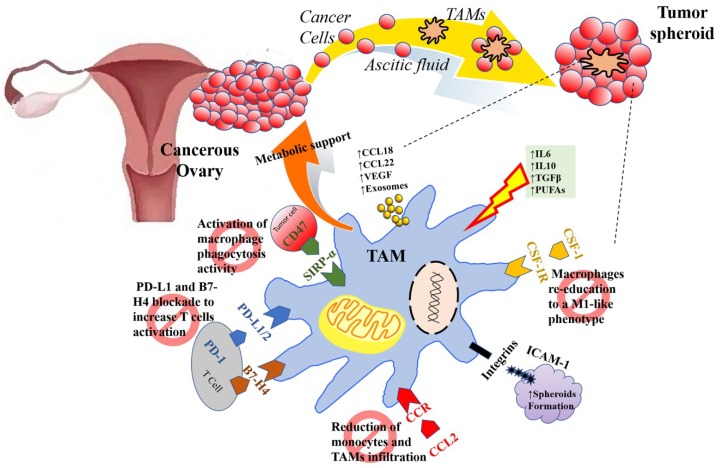Figure 1.
Tumor-associated macrophage (TAM) function in the ovarian cancer tumor microenvironment (TME) and examples of therapeutic strategies. Multiple mediators (such as IL10, IL6, TGFβ, PUFAs, etc.) in the TME determine the activation state and function of TAMs. In response to these triggers, TAMs produce a plethora of tumor-promoting soluble factors (such as VEGF, CCL22, CCL18, etc.) and extracellular vehicles (Evs) and probably supply metabolic support to cancer cells. TAMs provide matrix support and growth factors also in the core of the tumor spheroids, which are stabilized by ICAM-1. During ovarian cancer progression, tumor cells detach from the primary tumor and interact with TAMs to survive in the ascitic fluid as free-floating spheroids. Blocking key macrophage pathways influences the tumorigenic and immunosuppressive activities of TAMs, providing tools for the development of novel therapies to be combined with classical chemotherapy for gynecologic cancers. Inhibiting the PD-L1/2 immune checkpoint pathway results in reactivation of T cells. Re-activation of phagocytosis and promotion of M2 to M1-like phenotype shift are achieved by inhibiting the CD47 and CSF-1R pathways, respectively. Furthermore, inhibitors of chemokines (such as CCL2) involved in the recruitment of monocytes can prevent TAMs differentiation and accumulation within the TME, thereby reducing tumor growth and dissemination.

